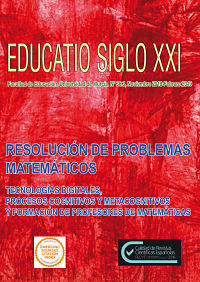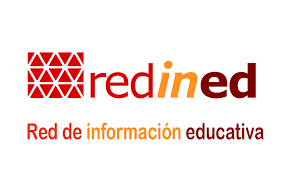Artistic and environmental didactics: stamping of vegetal matter as a teaching resource
Abstract
In this study we aim to show an interdisciplinary project that links competences, educational values and content from artistic and environmental teaching. The main objective is to create a teaching method based on the interaction of art with outstanding natural areas; taking engravings and colours and natural materials as the main vehicles of the teaching-learning process. These materials, including leaves, stems and even fruits, are not usually used by farmers and workers in charge of keeping protected natural areas. The context of the study is university education and we propose an innovative project that transversally couples the concepts of artistic and environmental education with a view to working with different areas of the curriculum. The line of work is called "ecological artistic planning." The project is aimed at primary education students, future teachers, that through field trips and classroom experimentation with graphic-art techniques such as monotype printmaking construct and relate elements of visual and plastic language with materials extracted from the natural environment without altering it. In this article we analyse content and processes as instrumental strategies of the artistic skills that students should acquire for their future teaching. The results of the experiment are reflected in experiences and different plastic compositions which, despite being built individually, all the students did at the same time in an atmosphere of dialogue among them and the environment. Finally, in full contact with nature, the plastic compositions are displayed and curricular findings are discussed in an assembly.
Downloads
-
Abstract1376
-
PDF (Español (España))2985
References
AEEA. (2014). Asociación española de educación ambiental. Recuperado de http://www.ae-ea.es/
AA.VV. (2014). Giuseppe Pepone: Prospectiva vegetale. Florencia. Forma Edizioni.
Bernal, M. (2013). Técnicadegrabado.es: (Difusión virtual de la gráfica impresa). Recuperado de http://www.revistalatinacs.org/067/cuadernos/14CBA.pdf
Böhm, W. (2010). Historia de la pedagogía: desde Platón hasta la actualidad. Villa María. Eduvim.
Cabezas, L., López, I., Oliver, J., Campos, R. y Barbero, M. (2016). Dibujo científico: arte y naturaleza, ilustración científica, infografía, esquemática. Madrid. Cátedra.
CENEAM (2010). Un viaje por la educación ambiental en España. Recuperado de http://www.magrama.gob.es/es/ceneam/recursos/documentos/viaje-educambiental-espana_tcm7-13605.pdf
CENEAM (2014). Ministerio de Agricultura, Alimentación y Medio Ambiente. Recuperado de
http://www.magrama.gob.es/es/ceneam/quienes-somos/
Garrido, M. (2014). Grabado: procesos y técnicas. Madrid. Akal.
Minkkinen, A. (2014). Arno Rafael Minkkinen. Recuperado de http://arno-rafael-minkkinen.com
Moreno, Mª., Abad, Mª. y López, L. (2011). Talleres de arte de reciclaje con materiales hospitalarios. Arte, Individuo y Sociedad, V (23), 135-151.
Palacios, A. (2006). Educación artística y ambiental: un estudio del caso británico a través del proyecto "art and the built environment". Arte, individuo y sociedad, V (18), 57-76.
Pardo, D. (2011). Gyotaku: L' âme des poissons. Concarneau. Coop Breizh
Tatarella, F. (2014). Natural arquitectura now. New York. Princeton architectural press.
Villafañe, J. y Mínguez, N. (2002). Principios de la teoría general de la imagen. Madrid. Pirámide.
Villalba, J. y Flores, M. (2015). Educación artística y educación transversal. Madrid. Asociación Española de Educación Ambiental.
Original work publishes in this journal is subject to the following terms:
1. Murcia University Press (the publishing house) holds the copyright of the publishes work, and favours and allows their reutilization under the use license stated in point 2.
© Servicio de Publicaciones, Universidad de Murcia, 2015
2. Work is published in the electronic edition under a license (Creative Commons Reconocimiento-NoComercial-SinObraDerivada 4.0 España (legal text). They can be copied, used, disseminated, transmitted and publicly presented, as long as: i) authorship and original publication source is acknowledged (journal, publishing house and URL of the work); ii) are not used for commercial purposes; iii) the existence and specifications of this use license is stated.
3. Conditions for self-archive. Authors are allowed and encouraged to disseminate electronically the pre-pint (before review) and/or post-print (accepted for publication) versions of their work before their publication since that favours earlier circulation and dissemination resulting in an increased chance for the authors to be cited and for the work to reach a bigger share of the academic community. Colour: RoMEO: green.








